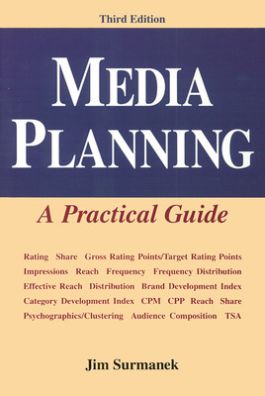Media Planning: A Practical Guide, Third Edition
Receive via shipping:
- Print bound version of the complete text
The perfect media-planning primer for your classroom or reference library. This comprehensive resource provides students with a solid foundation in media.
This book presents media dynamics--definitions of various popular media terms and how these terms fit into media planning analysis. The latter part of the book deals with media plan development--how a media plan is constructed and what students should consider in that construction. Interspersed are related topics with which students should be familiar in order to plan effective advertising efforts.
The Glossary/Index is a handy reference defining the most common terms used in media planning, as well as referring the student to the specific page where that term is discussed.
- Thoroughly discusses the major media forms including Interactive and Out-of-Home.
- Covers the basic components of a media plan: objectives, research, creative and promotion strategy, sales data, and competitive activity.
- Addresses basic questions regarding audience geography, scheduling, copy, coupons, reach, and frequency.

